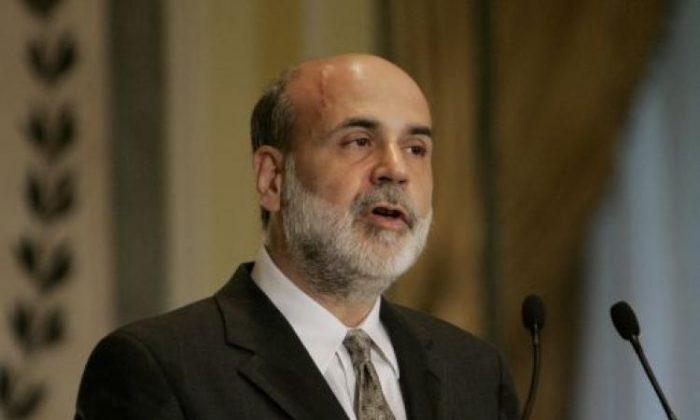Bernanke said that the central bank’s slow response to inflation has allowed the crisis to escalate into one of the worst periods in financial history since the early 1980s.
The former Fed chair, who served from 2006 until 2014, led the central bank through the 2008 financial crisis and was in part responsible for initiating the revolutionary, expansive loose monetary policy strategy.
He told CNBC that the decision on when the bank should have acted to tame inflation was “complicated” and that the challenges specific to the arrival of the pandemic in 2020 had complicated the bank’s task.
“There were a couple of issues that I think are related primarily to the pandemic itself and the way it has scrambled the usual indicators and made it harder for the Fed to read the economy,” said Bernanke.
Many critics have argued the Fed’s slow reaction has exacerbated the crisis, after failing to act when signs of inflation became apparent last year, with higher prices across the board causing pain to American households.
“The question is why did they delay that. ... Why did they delay their response? I think in retrospect, yes, it was a mistake,” said Bernanke, “and I think they agree it was a mistake.”
The Fed enacted its steepest hike to interest rates in 22 years on May 4, an acknowledgment of the extent of the inflation problem that the top officials at the central bank once dismissed as “transitory.”
The Fed is tightening policy with five more planned rate hikes this year and will start a reduction of its bond holdings in June, but there are concerns that it waited too long to pull back as it now confronts inflation running at an 8.3 percent annual pace.
The central bank, under its current chairman, Jerome Powell was called on to take aggressive action when the pandemic hit in March 2020, much like his predecessor in 2008.
The response of the Fed was modeled after the 2008 financial crisis plan, which kept historically low interest policies in place well after an economic recovery from the crisis.
In the summer of 2020 in the wake of a pandemic-induced recession, the Fed changed its policy framework, by allowing inflation to run hotter than normal to instigate faster economic growth and assure a complete jobs recovery.
After inflation began running higher than its 2 percent target in the spring of 2021, Fed policymakers dismissed the numbers as “transitory” as they thought that the pandemic-specific factors would gradually ease.
A miscalculation on the easing of the supply chain crisis, which was slower than expected, was another factor in the Fed’s delayed response, according to Bernanke.
Bernanke explained the Fed’s late decision by explaining that “one of the reasons was that they wanted not to shock the market.”
“Jay Powell was on my board during the Taper Tantrum in 2013, which was a very unpleasant experience,” said Bernanke.
“He wanted to avoid that kind of thing by giving people as much warning as possible. And so that gradualism was one of several reasons why the Fed didn’t respond more quickly to the inflationary pressure in the middle of 2021,” explained the former Fed chair.
“The Fed believed, in the middle of 2021, that these factors would likely solve themselves over time. In other words, that the supply shocks were ‘transitory’ and so they didn’t need to respond to the early stages of inflation because it was going to go away by itself. That proved wrong,” he added.
Over the past few weeks, several governors of the Fed have attempted to defend their response, saying that they did attempt to send “forward guidance” by telling the market that tighter policy was coming when it became clear that inflation would be more persistent.
Bernanke said that when American unemployment was hovering near 6 percent in the middle of 2021 after the White House’s “American Rescue Plan” passed, the Fed “could have responded” with rate hikes, but hesitated when it noted that there was “still a lot of slack” in the labor force.
While current high inflation is drawing comparisons to the hyperinflation of the late 1970s and early 80s, it is different from the last time price increases were this high, explained Bernanke.
He believes that the current central bank has built more public credibility in fighting inflation compared to 40 years ago, and that there is more support for rate hikes.
“There’s a lot of support for the fact that the Fed is tightening now, even though obviously we see the effects in markets,” said Bernanke.
“You know, we'll see the effects in house prices, etc. So those are some ways in which the current situation I think is better because we learned a lot from the 70s,” he concluded.
Stock markets have been plunging for several weeks, with declines driven in part by fears that the Fed’s rate hikes will push the economy into a recession.
The Dow, Nasdaq, and the S&P continued to plummet last week even after Powell dismissed the possibility of rate hikes larger than 50 basis points.






Friends Read Free